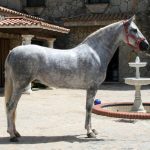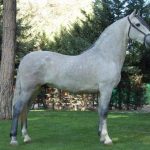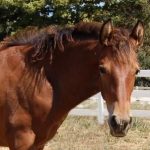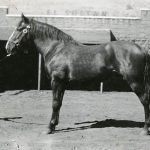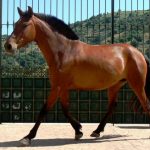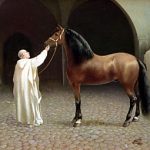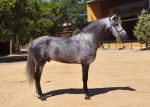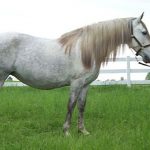Carthusian Horse
Often described as the purest remaining strain of the old Spanish Horses, the Carthusian Horse evolved as a genetically modified version of the original Andalusian horses. They are known for their flawless, graceful looks, natural balance, smooth rocking canter, and agility. With a decline in population, only about 500 of these individuals remain in Spain.
Carthusian Horse Pictures
- Carthujano
- Carthusian Horse Images
- Carthusian Horse Mare
- Carthusian Horse Photos
- Carthusian Horse Pictures
- Carthusian Horse Stallion
- Carthusian Horse
- Carthusian Horses
Quick Information
| Other Names | Carthujano, Bocado |
| Behavioral Characteristics | Noble, mild, lively, willing, adaptable |
| Physical Traits | The profile is convex with a light, elegant head, small ears, large, lively eyes, while the arched neck has a good proportion ending in a broad, deep chest; the back part is also wide, standing on sturdy legs with clean joints |
| Coat Colors | Most common is grey, but also black and chestnut |
| Height/Size | 15-16 hands (adult) |
| Weight | Average |
| Common Uses | Riding, eventing, horse shows |
| Health Problems | Generally healthy |
| Type | Riding horse, Show horse |
| Blood Type | Warm |
| Ancestors (Bloodlines) | Andalusian |
| Popular Traits | Solid, resistant, hardy |
| Feeding/Diet | General horse diet including hay, grass, grains, etc. |
| Country of Origin | Spain |
Video: Cartujano-Andalusian Horse
History and Development
Very little is known about the development of these horses with very little documentation found in English. They are one of the world’s oldest studbooks belongs to the Carthusian Horse. It was in the 18th century that this breed developed from an Andalusian foundation sire named Esclavo. This dark grey stallion was considered to be immaculately perfect except for the presence of warts under the tail. In the latter years, it is this feature that came to be the mark of the Carthusian bloodline.
However, other than these warts, the sire passed its genetic traits like the presence of ‘horns’ (actually a small horny wart of deposited by calcium in the middle of the forehead) down the line, giving birth to a number of colts in no time.
In 1736, a few of these mares were gifted to a Carthusian monastery, while the rest of the horses were absorbed into the original Andalusians.
Credit goes to the monks belonging to the monastery since it was for their effort that these remaining horses retained the pure bloodline and continued to breed the next generation of Carthusian horses.
In the next few centuries, the monks refused to introduce the genes of the other breeds into their bloodline, and thus, practically kept them segregated from the Andalusians.
At present, only 3% of the Andalusian line is purely Carthusians. Continued measures have been adopted along with selective breeding so as to retain the old bloodlines of these horses. They are being bred and raised in the stud facilities around Jerez de la Frontera, Cordoba, and Badajoz, which are all owned by the state. Unfortunately, they only comprise around 3% of the Andalusian population, and their numbers are rare.
Though they do not have a separate registry, an individual must be validated by the Association of Cartujano Breeders in cooperation with the University of Cordoba, in order to be labeled as a “pure Cartujano”.
Interesting Facts
- Approximately, about 82% of the pure Spanish horses (Pura Raza Espanola) in Spain contain the blood of the Carthusians.


